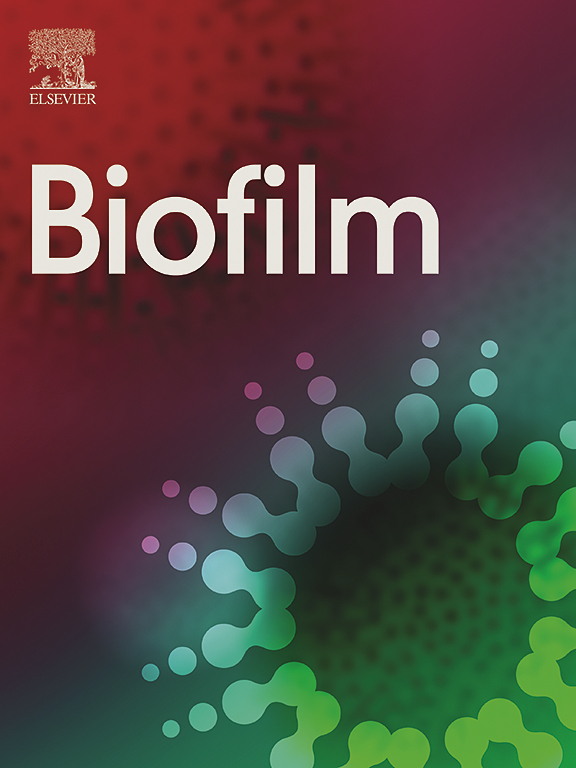Time-resolved dual transcriptomics of Pseudomonas aeruginosa biofilm formation in cystic fibrosis
IF 4.9
Q1 MICROBIOLOGY
引用次数: 0
Abstract
Pseudomonas aeruginosa biofilms cause severe infections in the airways of patients suffering from cystic fibrosis (CF) that are difficult to eradicate, even with intensive antibiotic therapy. The main goal of this study was to define the dual transcriptional response associated with the formation of P. aeruginosa biofilms in a polarized lung epithelium monolayer. We analyzed the dual response of healthy and CF epithelium after infection with P. aeruginosa isolates from acute and chronic infections. Our results show that strains of P. aeruginosa isolated from chronic infections specifically increase the expression of secretion systems of type I, III and VI to hijack the host response. Conversely, strains associated with acute illness use ABC transporters to counteract the antimicrobial response. In return, a distinctive expression pattern in the CF epithelium, including a high degree of cytokine secretion and keratinization, is largely observed in acute infections. Our results show that both host and pathogen genomic backgrounds contribute to the outcome of infection and specific transcriptional signatures could be used in the diagnosis, particularly in CF patients.
囊性纤维化中铜绿假单胞菌生物膜形成的时间分辨双转录组学
铜绿假单胞菌生物膜在囊性纤维化(CF)患者的气道中引起严重感染,即使进行强化抗生素治疗也难以根除。本研究的主要目的是确定在极化肺上皮单层中与铜绿假单胞菌生物膜形成相关的双转录反应。我们分析了急性和慢性感染铜绿假单胞菌分离株感染后健康和CF上皮的双重反应。我们的研究结果表明,从慢性感染中分离的铜绿假单胞菌菌株特异性地增加I型,III型和VI型分泌系统的表达,以劫持宿主反应。相反,与急性疾病相关的菌株使用ABC转运蛋白来抵消抗菌反应。反过来,CF上皮的独特表达模式,包括高度的细胞因子分泌和角化,在急性感染中大量观察到。我们的研究结果表明,宿主和病原体的基因组背景都有助于感染的结果,特定的转录特征可以用于诊断,特别是在CF患者中。
本文章由计算机程序翻译,如有差异,请以英文原文为准。
求助全文
约1分钟内获得全文
求助全文

 求助内容:
求助内容: 应助结果提醒方式:
应助结果提醒方式:


